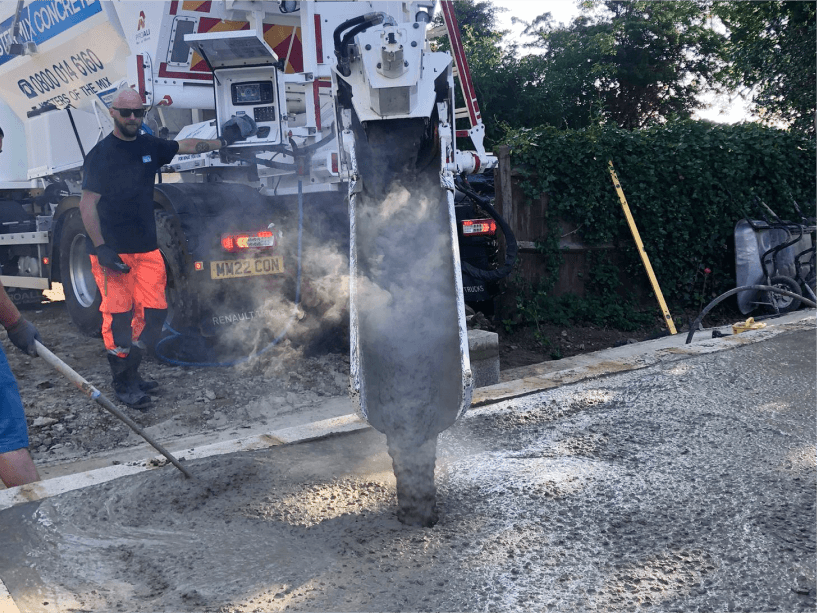Concrete is a strong, composite building material, made from cement, aggregates, sand, and water. The types of concrete we use today are very different from the various versions used throughout history, but there have been forms of concrete, or concrete-like materials in use for thousands of years.
EARLY USES OF CONCRETE
Cement is a key part of a concrete mix, so when tracing the history of concrete, you can look back to ancient methods using any cement-like ingredient.
The Nabataea traders or Bedouins built the first concrete-like structures in southern Syria and north Jordan in approximately 6500BC. They went on to discover hydraulic lime in 700BC, and began to build kilns to heat the lime with volcanic ash, forming a waterproof cement. This cement was used to produce mortar needed to make houses, floors and underwater cisterns. Being able to build these strong structures helped them to survive and thrive in desert landscapes.
The Nabataea kept their concrete mix as dry as possible, because any excess water would create voids and cause weakness in their structures. A process called tamping was used to compact the concrete before it cured, this helped encourage the chemical reactions that take place when cement is hydrated and starts to bond together.

HISTORIC USES OF CONCRETE
ANCIENT EGYPTIAN USES OF CONCRETE
Concrete type mixes were used to form magnificent historical structures that still stand today. In around 3000BC the Great Pyramid at Giza was made using around 500,000 tons of mortar. The mortar was used between and beneath the casing stones that make up the visible surface of the pyramid.
ANCIENT CHINESE USES OF CONCRETE
At a similar time, in northern China, a concrete type mix was used to build the Great Wall. A sticky rice mixture was used as a key ingredient of the mortar, and proved to be exceptionally strong, standing the test of time to this day.
ANCIENT ROMAN USES OF CONCRETE
The Romans made use of similar mixtures of hydraulic lime and volcanic sand as seen in Bedouin structures. The Roman Baths, the Pantheon and the colosseum all still stand today. Additives such as animal fat, blood and milk were used by the Romans to alter the composition of their concrete mixtures, based on the properties needed.
Concrete technology didn’t always keep progressing though. In 476AD, after the fall of the Roman Empire some of the techniques used to make concrete were lost. It wasn’t until 1414, when manuscripts were discovered that described some of the techniques, that there was a revival of interest in building with concrete.
WHO INVENTED CONCRETE AND WHEN?
When answering the question, ‘when was concrete invented?’, it really depends on your definition of concrete. We’ve talked about ‘concrete-like’ building materials used throughout history, but when did modern methods of making concrete begin?
In 1793 John Smeaton found a way to produce hydraulic lime for cement using heated natural limestone that was ground into powder. Smeaton’s process relied on using naturally occurring materials, which varied in their chemical composition, and it was difficult to produce batches of concrete with exactly the same properties.
Current concrete mixes use Portland cement, which was invented by Joseph Aspdin in 1824. This marked the start of being able to use carefully measured ratios of ingredients, and by 1860 the first modern compositions of Portland cement had been perfected.


CONTEMPORARY USES OF CONCRETE
Today, concrete can be made using different ratios of cement, aggregates, sand, and water depending on the requirements of the final mix. Ratios are expertly altered, and additives can be used to change the setting properties of the concrete mix. In extreme weather environments, these additives can help the concrete withstand very high or low temperatures, heavy rain and strong winds.
Concrete buildings can polarise opinion, and many iconic contemporary structures and famous concrete buildings, like the Sydney Opera House and the Hoover Dam have been built using concrete. At 2,717 feet tall, the Burj Khalifa in Dubai is an example of how reinforced concrete can be used to create a building taller than had ever been seen before, with barely any concrete visible on the exterior of the structure.
As technology advances and additives are developed, the uses of, and types of concrete have become hugely varied. It’s not just a structural material anymore, you’ll even find decorative concrete used to create a design feature on finished surfaces in homes and commercial projects. Concrete doesn’t have to be hidden; it can be a celebrated focal point.
So if you’re looking to make history with concrete, simply contact us today and we’ll be able to assist you.
- ANY SIZE
ORDER - FREE NO
OBLIGATION QUOTES - ONLY PAY FOR
WHAT YOU USE - SAME DAY/
NEXT DAY DELIVERY
AREAS WE COVER
We deliver concrete of any size order to Watford and the
surrounding areas. We promise fast, same or next day deliveries and
an efficient service every time.
